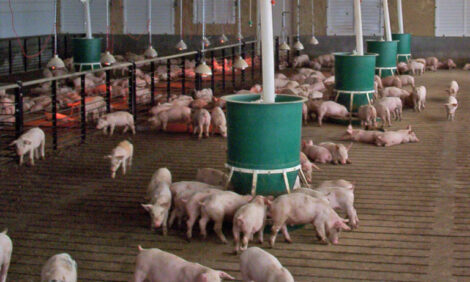



Agricultural Commodity Markets Outlook
By the European Commission - This report analyses the evolution of world agricultural commodity markets over the course of the last 25 years and anticipates the potential changes that will likely take placeover the coming decade. It is primarily based on the medium term outlook of the Organisation for Economic Co-operation and Development (OECD) and the economic forecasts of the Food and Agricultural Policy Research Institute (FAPRI).
Although world pigmeat consumption and production ranks second to poultry in terms
of recent growth, it remains the more important sector in terms of quantity (92 mio t were
produced in 2000-2002). Asia is the dominant region in this sector, accounting for 56 %
of world production and consumption and China is single-handedly responsible for
almost half of world consumption and production. The growth of the world pork sector is
projected to slow down over the next decade. The EU’s share in world exports (about one
third for many years) has shrunk in the recent past as Canada and Brazil have gained
importance and strengthened their export position, and the USA has switched to a netexport
position.
Cereals production and consumption has grown at very modest rates since 1980 and is
forecast to continue at this pace for the next decade with the coarse grains market
remaining slightly more dynamic than wheat. The EU is forecast to maintain its current
level of exports and thus is expected to slowly lose part of its market share, especially in
the coarse grains sub-sector. Australia and Argentina will most likely benefit from this in
the wheat market, and the US and Argentina in coarse grains. No significant change in
cereal prices is expected.
World oilseed production and consumption has grown at robust rates in the last quarter
of a century and, although this growth rate could drop somewhat in the next 10 years, it is
nevertheless expected to remain double that of cereals. In order to bring demand and
production into balance nominal oilseed prices could rise modestly. Brazil will overtake
the USA as the most important oilseed exporter. China could double its imports and,
therefore, absorb almost half of the oilseeds traded in 2014/2015. The EU will remain the
second major importer.
Production and consumption of oilmeals will basically follow the growth pattern of
oilseeds although the share of oilmeals traded is unlikely to increase further as crushing
capacity improves where the meals are consumed. Argentina and Brazil together are
expected to account for at least three quarters of world oilmeal exports in 2014. The EU,
already by far the most important importer is likely to increase its imports further.
Global consumption and production of vegetable oils has increased at the fastest pace of
all sectors in the oilseeds/meals/vegetable oils complex and is expected to continue doing
so.
Further Information
To read the full report, click here (PDF)
Source: European Commission - February 2006








